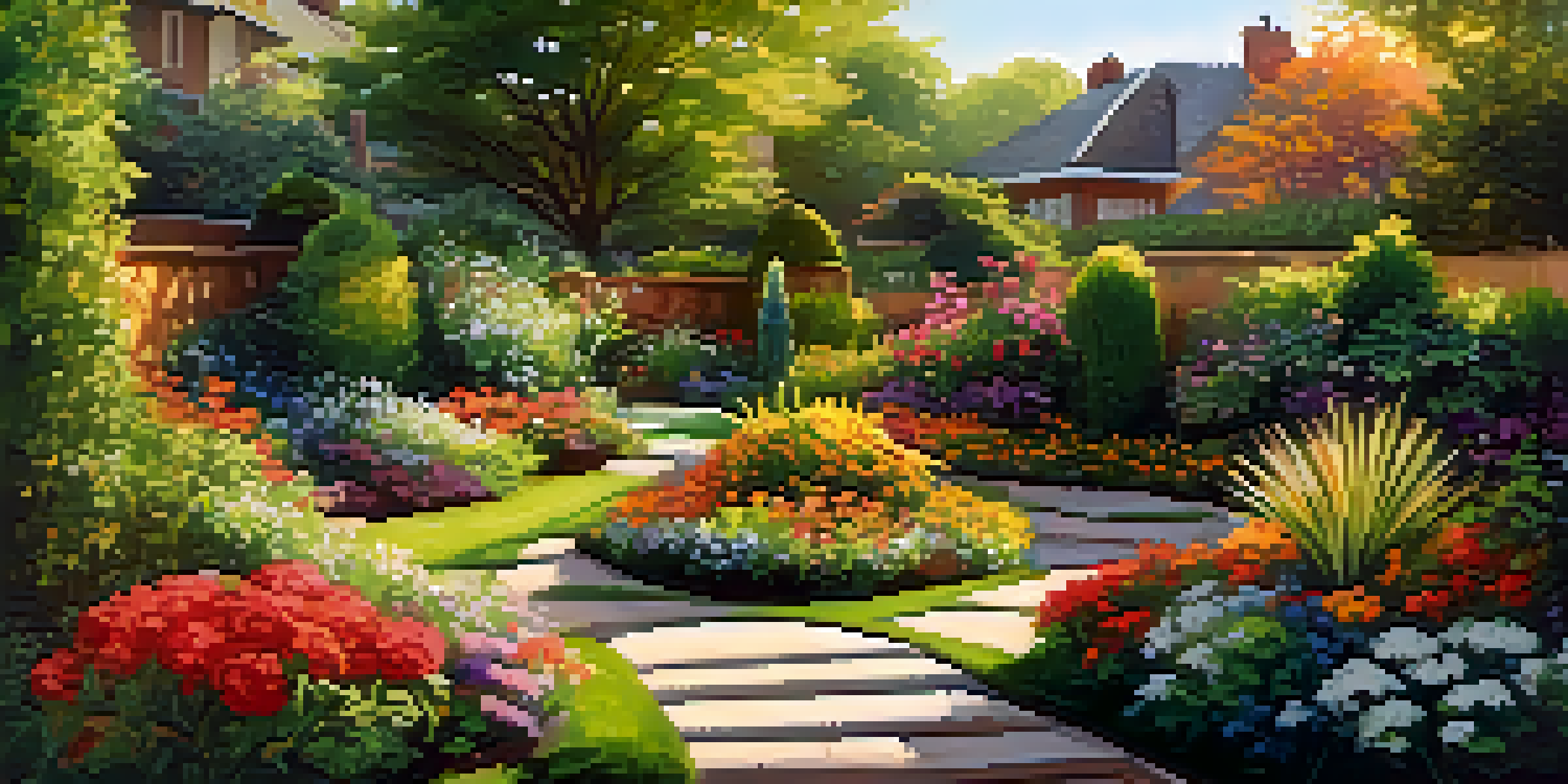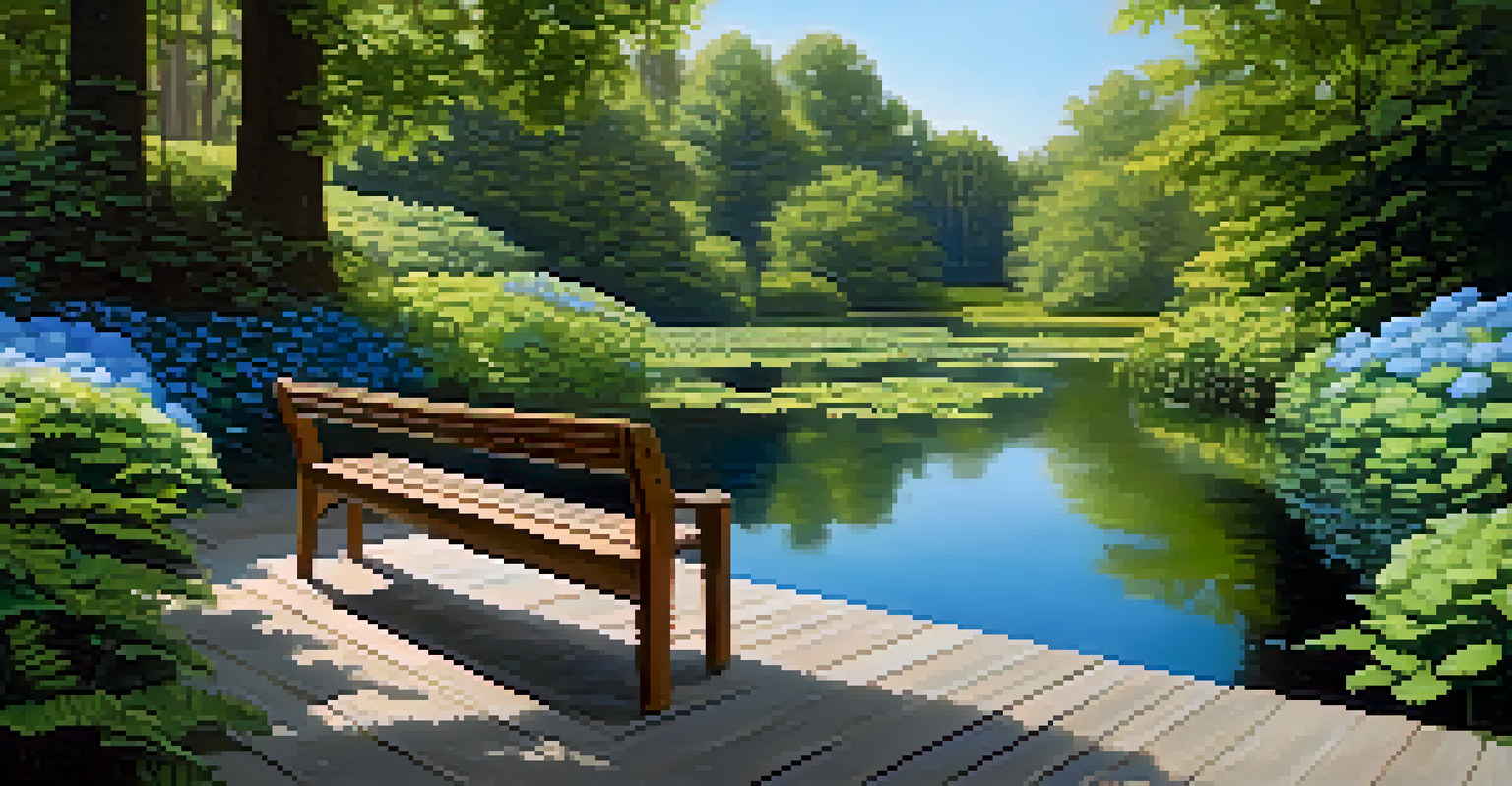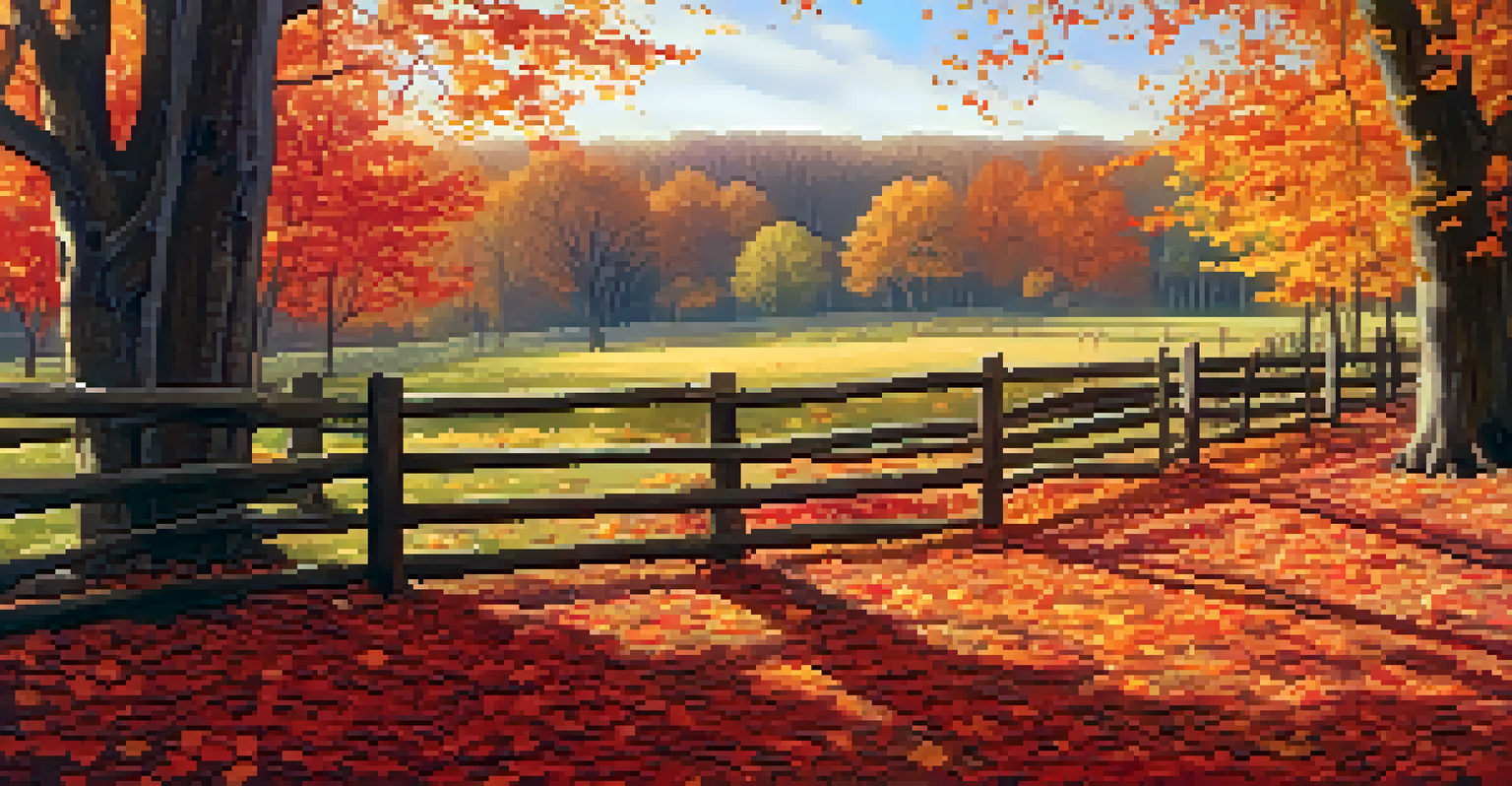How to Use Color in Landscaping to Enhance Outdoor Spaces

Understanding the Basics of Color Theory in Landscaping
Color theory is a fundamental concept that can dramatically influence your landscaping design. It revolves around the color wheel, where colors are categorized into primary, secondary, and tertiary hues. Understanding how these colors interact can help you create a harmonious outdoor space that feels balanced and inviting.
Color is the keyboard, the eyes are the harmonies, the soul is the piano with many strings.
For instance, complementary colors, which are opposite each other on the wheel, like blue and orange, create a vibrant contrast that can energize your garden. On the other hand, analogous colors, which are next to each other, like blue and green, can create a more calming and cohesive look. By grasping these basics, you can start to visualize how color can work for your landscape.
Ultimately, the goal is to create a space that resonates with your personal style while enhancing the natural beauty of your surroundings. Whether you want a lively garden that sparks joy or a serene retreat for relaxation, a good understanding of color theory will set the foundation for your landscaping project.
Choosing the Right Colors for Your Landscape Design
Selecting the right colors for your outdoor space can feel overwhelming, but it doesn't have to be! Start by considering the existing environment, like the color of your home, trees, and even hardscaping elements like patios or fences. This will help you decide on a color palette that complements the overall scenery.

It's also important to think about the emotions that different colors evoke. For example, warm colors like reds and yellows can create a cozy and inviting atmosphere, while cooler colors like blues and greens often promote tranquility. By aligning your color choices with the feelings you want to inspire, you can create a more meaningful outdoor space.
Master Color Theory for Landscaping
Understanding color interactions can help create a harmonious and inviting outdoor space.
Finally, don't be afraid to experiment! Use color swatches or even digital tools to visualize how different tones will look together in your landscape. This playful exploration can lead to delightful surprises and ensure your outdoor space truly reflects your personality.
Incorporating Seasonal Colors for Year-Round Appeal
One of the joys of landscaping is the ability to change with the seasons, and color plays a vital role in this transformation. By selecting plants that bloom at different times throughout the year, you can ensure that your garden remains vibrant no matter the season. For instance, spring bulbs like tulips bring bright colors after winter, while autumn foliage offers stunning reds and oranges.
Colors are the smiles of nature.
Consider layering your plants to maintain interest throughout the seasons. This means planting early bloomers alongside perennials that flower later, creating a continuous display of color. By understanding your local climate and the growth cycles of your plants, you can design a landscape that is not only beautiful but also dynamic.
Additionally, incorporating hardscaping elements, like colored stones or painted garden furniture, can add another layer of visual interest that lasts year-round. These elements can serve as anchors for the color scheme, making your outdoor space feel cohesive through all four seasons.
Using Color to Define Different Areas of Your Landscape
Color can be a powerful tool for delineating different areas within your outdoor space. For instance, you might use warm colors in a seating area to create an inviting atmosphere, while cooler shades in a garden path promote calm and relaxation. This strategic use of color helps guide visitors through your landscape, creating a natural flow from one area to another.
You can also use color to highlight focal points, such as a striking sculpture or a beautiful tree. By painting planters or using colorful blooms nearby, you draw the eye to these features without overwhelming the space. This not only enhances the visual appeal but also creates a sense of harmony throughout your garden.
Choose Colors That Evoke Emotion
Selecting colors based on the feelings you want to inspire can enhance the meaning of your landscape.
Remember, the key is balance. Too much of one color can lead to chaos, while too little can make your space feel flat. By thoughtfully integrating color into your landscape design, you can create distinct areas that are both functional and aesthetically pleasing.
The Psychological Impact of Color in Outdoor Spaces
Colors can influence mood and feelings in profound ways, and this holds true for landscaping as well. For example, studies show that greenery and natural colors can reduce stress and promote relaxation. So, if you're looking to create a peaceful oasis, incorporating greens and blues can be particularly beneficial.
On the flip side, bright colors like yellow and orange can stimulate energy and creativity, making them ideal for areas meant for gatherings or play. This is why many schools and playgrounds often feature these vibrant hues. Understanding the psychological impact of color can help you design spaces that not only look good but also feel good.
Ultimately, the colors you choose should align with how you want to feel in your outdoor space. Whether you desire tranquility, energy, or a mix of both, using color intentionally can help you achieve your desired atmosphere.
Creating Contrast and Depth with Color in Landscaping
Contrast is key in making your landscape visually appealing, and color plays a crucial role in achieving this depth. By pairing light colors with darker shades, you can create a striking visual effect that draws the eye. For example, planting light-colored flowers against a dark green backdrop makes them pop, adding dimension to your garden.
In addition to plants, consider using hardscaping elements to enhance contrast. A dark stone pathway lined with bright flower beds can make your landscape feel more dynamic and layered. This technique not only adds interest but also helps to guide the eye and create pathways throughout your yard.
Maintain Vibrancy Year-Round
Regular maintenance and seasonal adjustments are key to keeping your colorful landscape looking its best.
Remember to balance contrast with harmony; too much variation can feel chaotic. Aim for a cohesive look while utilizing contrast to highlight specific features, ensuring your landscape remains inviting and engaging.
Maintaining Your Colorful Landscape Throughout the Year
Once you’ve designed your colorful landscape, the next step is maintenance to keep it looking vibrant. Regular watering, pruning, and deadheading will ensure your plants continue to thrive and produce their beautiful colors. Seasonal tasks, such as mulching or adding new plants, can also help refresh the color palette as the seasons change.
Additionally, it's essential to monitor how colors evolve over time. Plants may change hues as they grow, and some may require more sunlight or nutrients to maintain their vibrancy. Keeping a close eye on your garden will help you make adjustments as needed, ensuring that your outdoor space remains stunning year-round.

Lastly, don't forget to replace any plants that don't thrive in your landscape. This can be an opportunity to experiment with new colors or varieties, keeping your garden fresh and exciting. With a little effort, your colorful landscape can become a source of joy and pride for years to come.